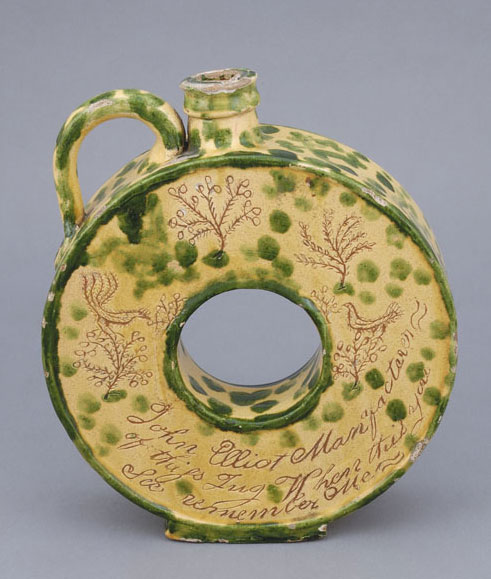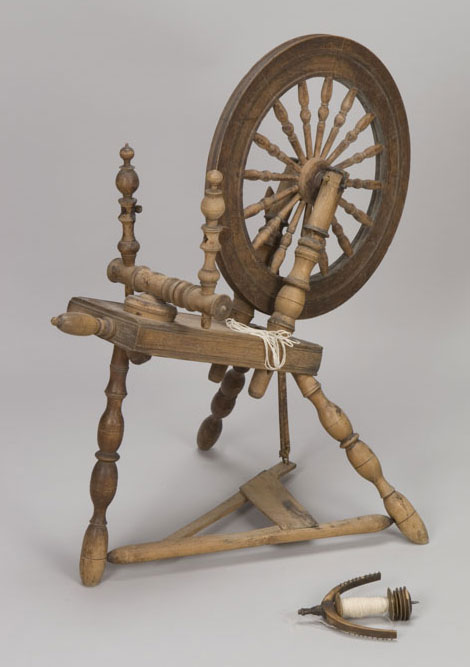Canadian History Hall Storytelling: The Human Experience
As the Canadian History Hall team began its task of creating an exhibition spanning 15,000 years, we looked closely at how we could tell stories about the people of the past in ways that would connect with our visitors. Our goal was to go beyond the well-documented lives of leaders and elites to explore the lives of ordinary men, women and children. Further impetus to do this came from a variety of sources, including the public engagement exercise that we undertook in 2012–2013, and from feedback received from the Canadian History Hall advisory committees encompassing academics and community representatives.

Harvest ring. Inscription: John Elliot Manufacturer/of this jug. When this you/see remember me 1846
John and Heather Harbinson Collection, Canadian Museum of History, 2007.22.41
To meet our goal, we created a guiding principle that we called the “Human Experience.” This was one of six principles we developed to help guide our choices as we made decisions about what to present and how to do so in the exhibition. We defined the Human Experience as follows:
“Canadian history is the lived experiences of the real people of the past, and their stories are the beating heart of the exhibition. Aspects of the human experience, such as universal themes, the expression of emotion and perception through the senses, help transcend time and place, and deeply connect the subjects of the exhibition and its visitors.”
We then looked closely at the exhibition storyline in a series of “Human Experience” workshops. Our aim was to humanize content, particularly in cases where the subjects were unknown and had left little documentary evidence behind. For each story, we asked who was involved and whose voices should be heard. We explored which key activities or experiences we felt it important for the visitor to encounter. We also considered the emotional qualities of the story and looked for universal themes to help connect with visitors. The exercise helped shape the story we needed to tell, giving us artifact possibilities and, often, ideas for how to present the stories in engaging ways.

Spinning wheel, early 1800s. Canadian Museum of History, D-8830
These results, and our ongoing attention to the human experience, have shaped the galleries you will see when the Canadian History Hall opens on July 1, 2017. In Gallery 2, for example, a part of the exhibition focuses on the ways in which massive English-speaking immigration transformed colonial Canada, and we highlight the settlement of Upper Canada. To help humanize a story of such immense scale, we chose objects with a personal connection or ones that could be used to interpret peoples’ lives. For instance, to bring to life immigration, we chose to display a trunk used by Irish immigrant Thomas Elliot. We also selected a variety of artifacts related to work and domestic life, which will give visitors a glimpse of how families cleared the land, earned a living, established homes and lived from day to day. And to give voice to these people, personal accounts from settlers will be available in audio format for visitors to hear.
By taking this approach throughout the gallery, we hope that the exhibition will allow visitors to engage with the content on a human and personal level.